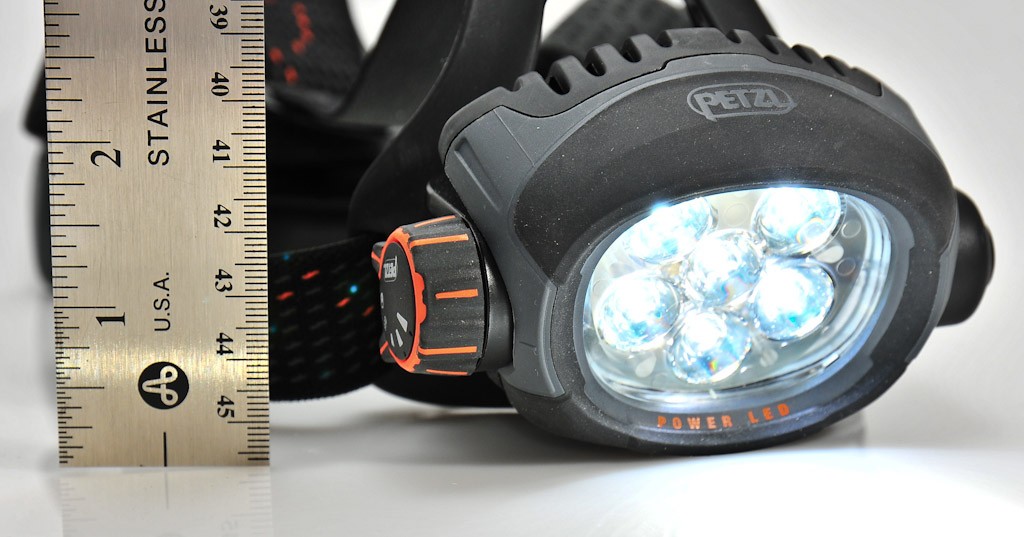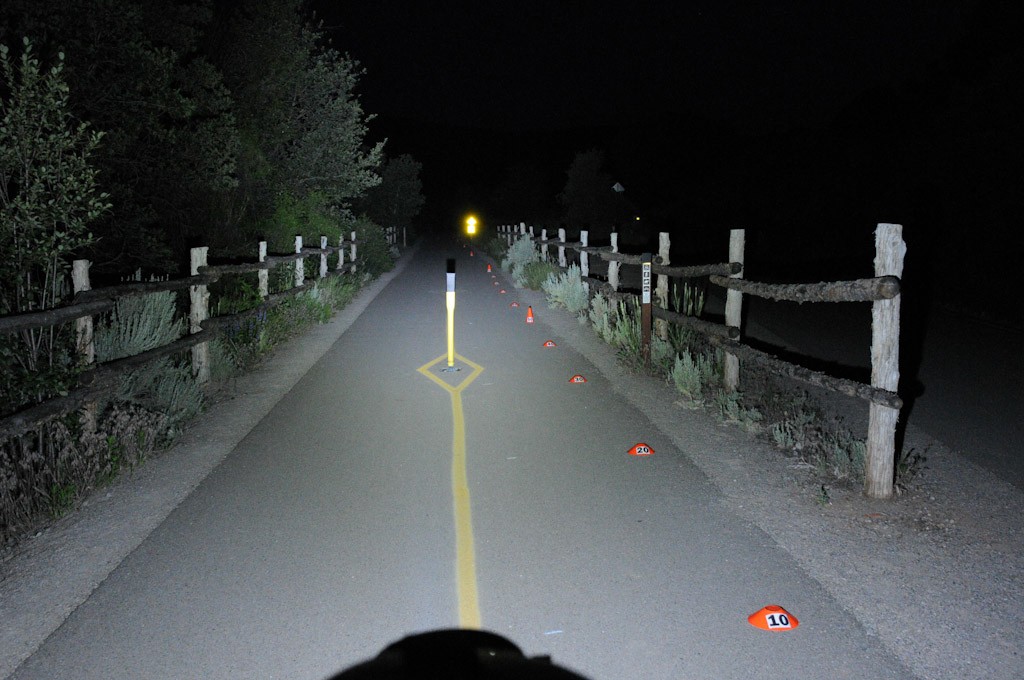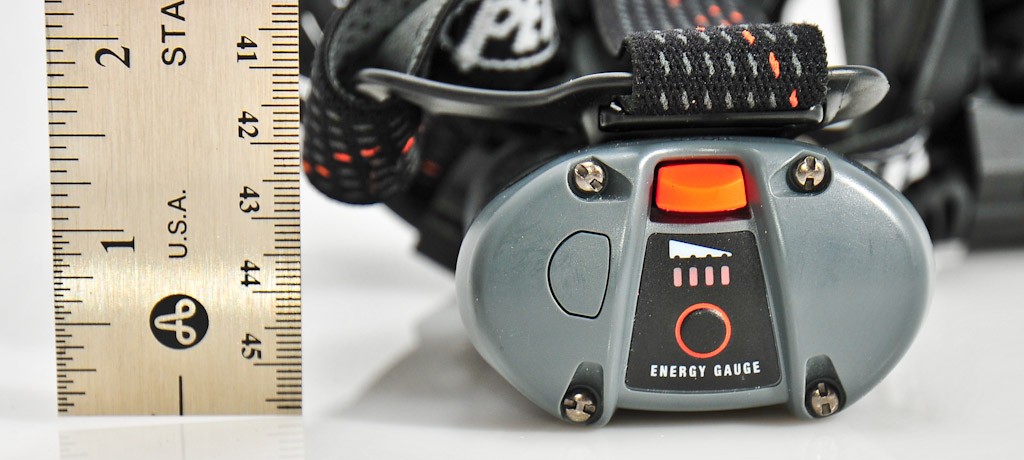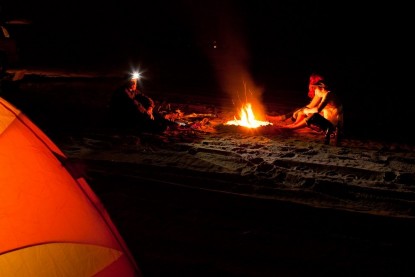Petzl Ultra Review
Our Verdict
Our Analysis and Test Results
Performance Comparison
Trail Finding
This had the best trail finding score of any headlamp tested and scored a perfect 10 of 10. As you can see in the beam comparison photo below against the Coast (scored 8 of 10), the Coast shines a little farther, but the Ultra illuminates much more of what is immediately in front of you with a more even light.
The Ultra similarly blows away the Top Pick Black Diamond Icon which scored 9 of 10.
Close Proximity
Surprisingly, the Ultra does not have the best close proximity beam pattern and only scored a 7 of 10. Below, the Icon has a nearly even distribution of light across target whereas the Ultra concentrates much of the light in the center, making it harder to pick out items in the periphery.
Battery Life
The Ultra only lasts . hours in high-beam mode using the ANSI standard (learn more about ANSI in the Headlamp Review ). This is partly due to the high lumen output, and partly because of the rechargeable battery (rechargeable batteries generally only last as third as long as their disposable counterparts). You can turn now the brightness setting on the Ultra to make it last longer, but then what is the point of having a heavy spotlight on your head if you are not blasting a bright beam?
In this battery life vs. beam distance graph, you can see just how much more time the Icon puts out a high powered beam (over 8 hours in the ANSI tests).
Brightness
This score is surprisingly modest 8 of 10 since Ultra does not concentrate the light in a narrow beam (which leads to a higher score). The measured maximum beam distance as 108 m. That is not bad but falls well short of the Fenix HP11 (173 meters) and the Coast HL7 (128 meters) which are both many hundreds of dollars less expensive. The the Ultra is the ultimate light for seeing what is 10-100 meters away from you. But it is not a top scorer like the Fenix HP11 for seeing what is 150-175 meters away. The Fenix is the lux leader with 469 while we measured the Ultra at 183 lux.
Weight
At 367 grams (12.9 ounces), this is by far the heaviest headlamp we tested and heavier than most climbing helmets. To take the weight off your head, there is an option to remove the battery pack and store it in your hydration pack or jacket and then power the light from a cable. This might be ok in cold weather to enhance battery performance, but otherwise its a pain. By comparison, the Icon is 33% lighter at 230 grams and the Coast HL7 is a third the weight at 124 grams.
Ease of Use
A dial on the side is relatively easy to use and scored a 7. This was one of the easiest headlamps to use with gloves.
Best Applications
Because of the weight and short battery life, this is really only ideal for brief bursts of high-speed activity at night. It would be an ideal night skiing light… for the few people that do that. It might also serve well for mountain biking although many people will prefer a lighter weight option with the same lumens mounted to their handlebars (that costs a lot less).
Value
No other headlamp was even close to this expensive. In fact, you could almost buy two of every award winning headlamp in our review and still have extra money left over for batteries.
Conclusion
This headlamp is impressive but has some serious drawbacks. It is heavy, outlandishly expensive, does not perform great at close distance and has a very short battery life. The upside is you dont need to buy spare batteries and you get one of the most powerful and even trail finding beams in existence.
For only $36, the Coast HL7 is a better fit if you are looking for a bright beam. The Coast is one third the weight, a 14th the cost, has a longer range spotlight, better battery life and much more even beam at close proximity.
Another option is the Black Diamond Icon which is not as good at trail finding or brightness but scored higher in most other categories, is lighter, only $80 and last for 12 hours in bright mode. Lastly, if you really want a blindingly bright beam on a budget, check out the Fenix HP11.







